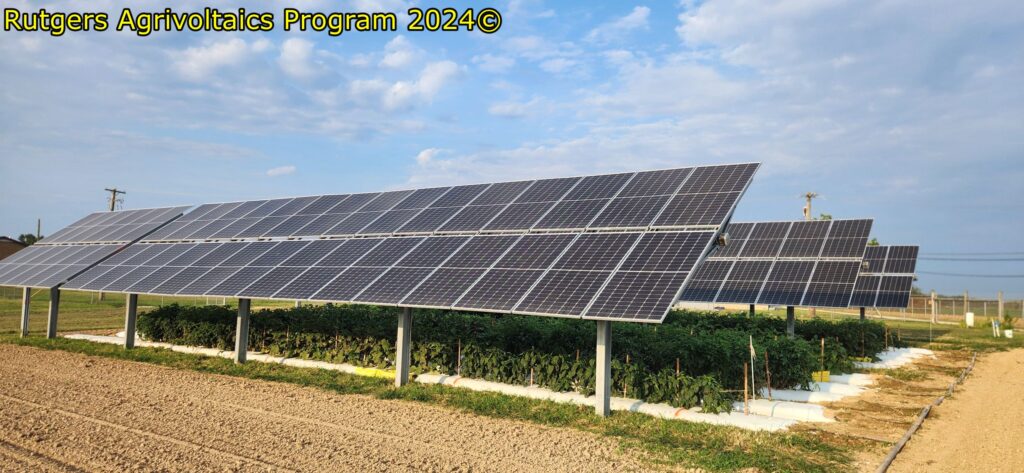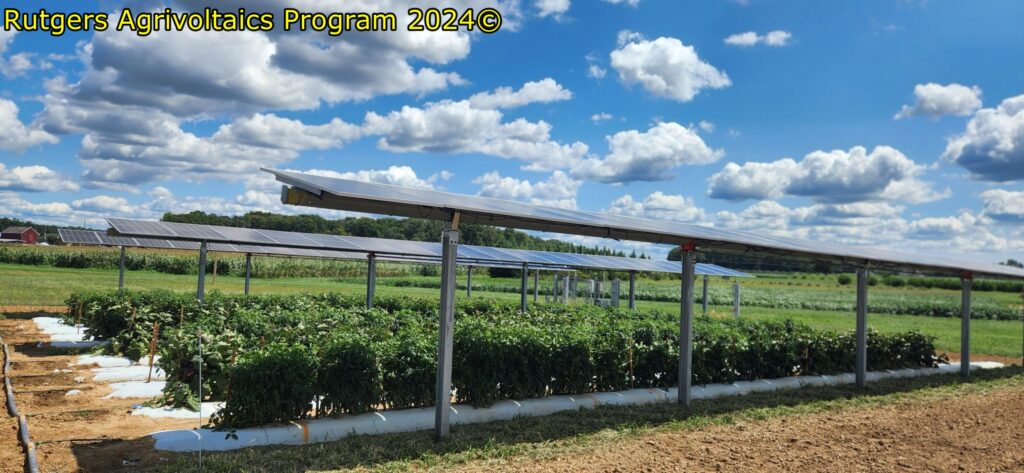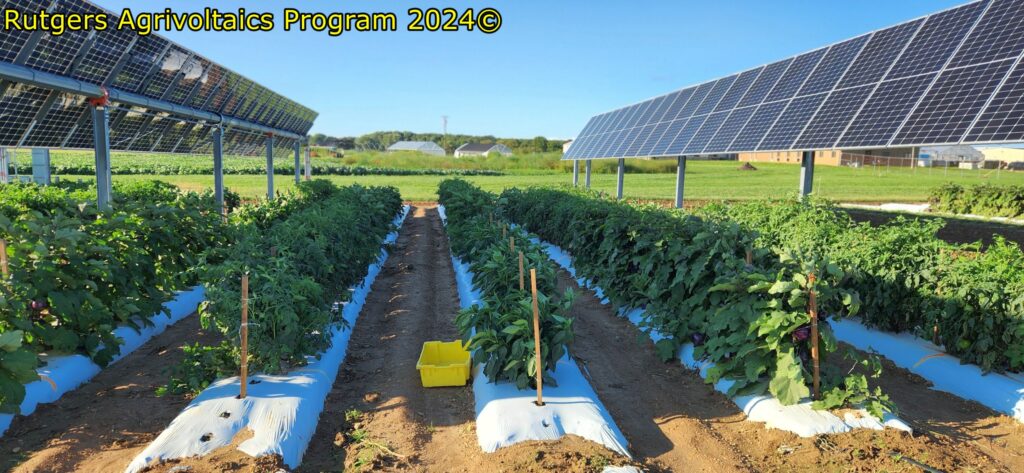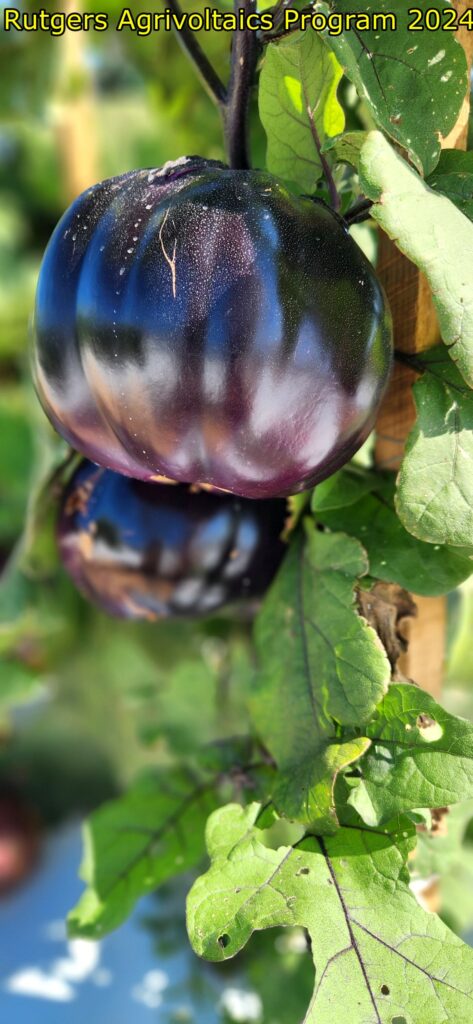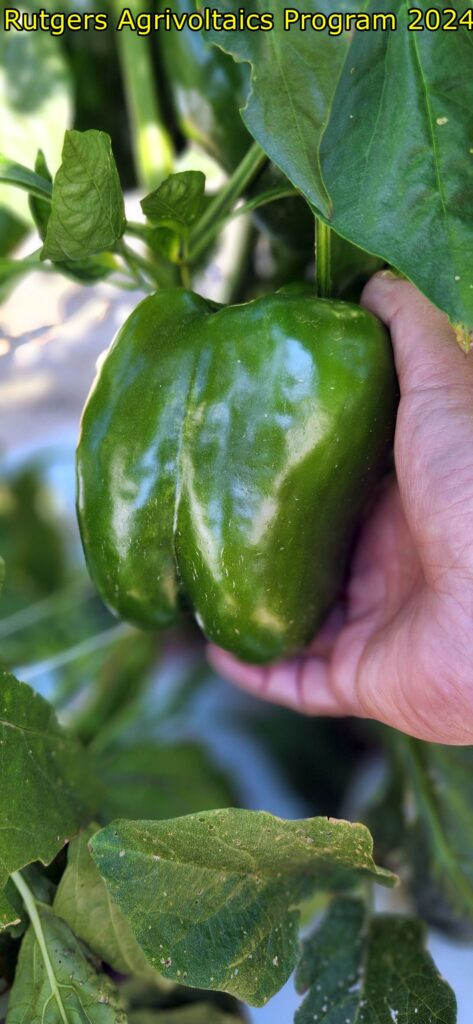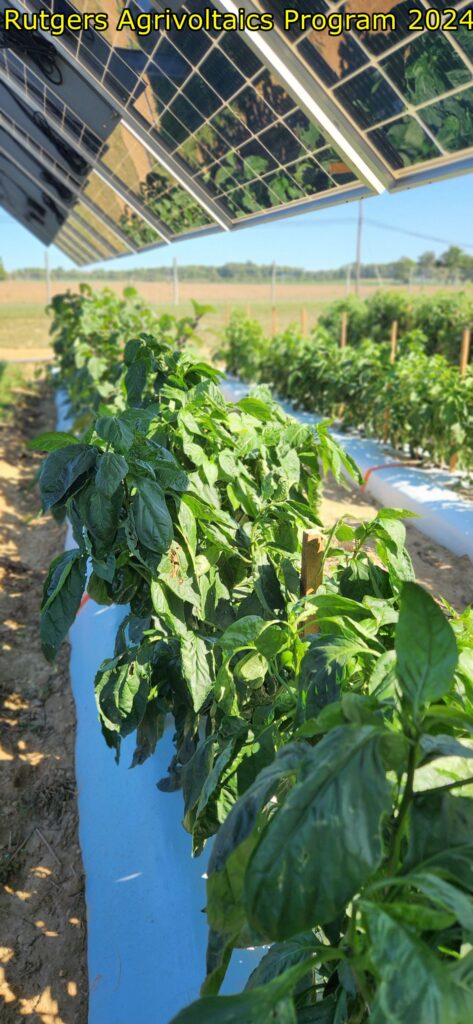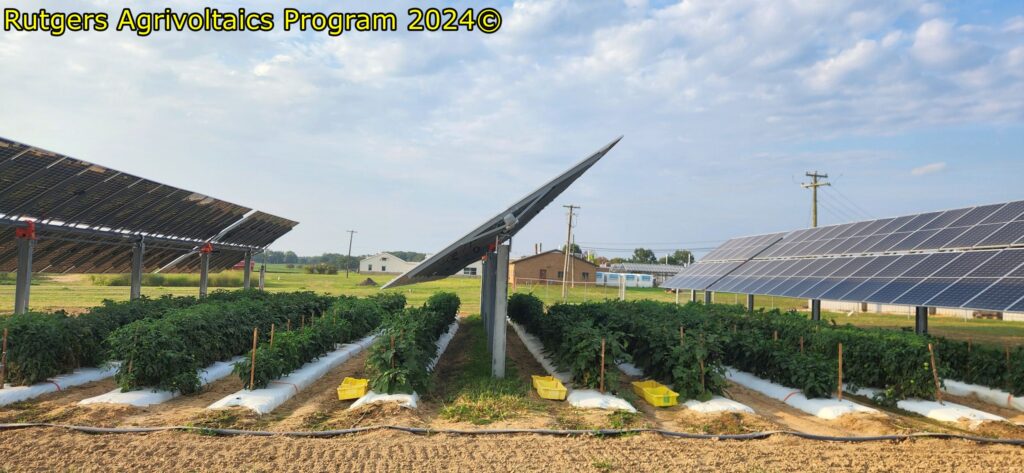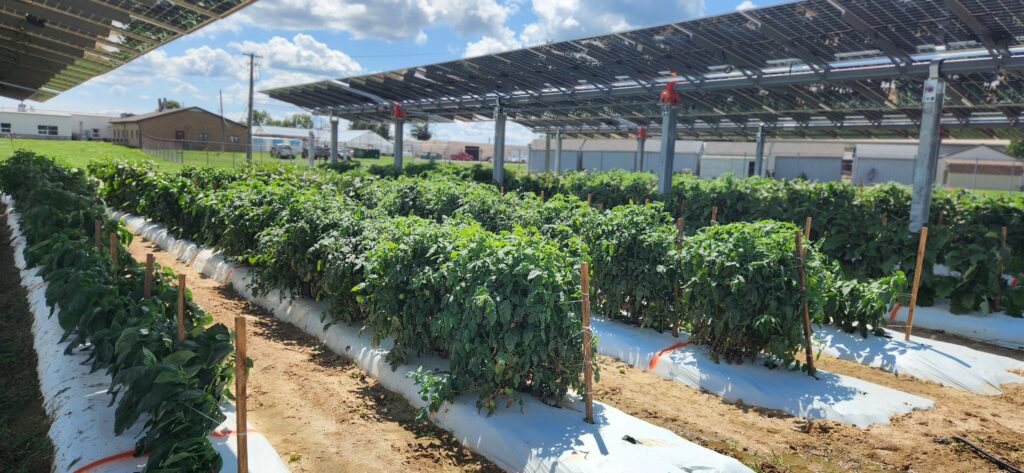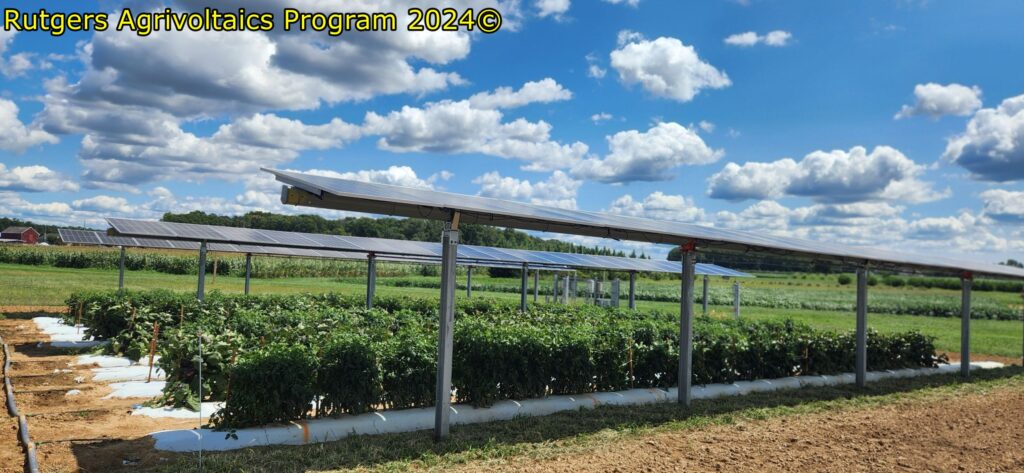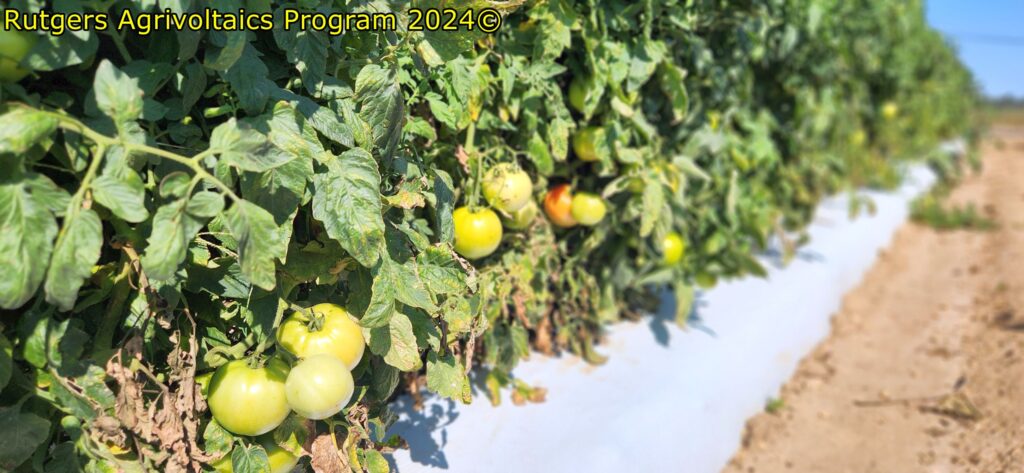Main Content
The agrivoltaics research at the Rutgers Agricultural Research and Extension Center (RAREC) was a focus of the 2024 RAREC twilight tour on 19 Sep that was attended by stakeholders and Extension personnel from around the state. Dr. Dan Ward, RAREC Director and RAP Team member, spoke to the attendees at length about the challenges, costs, and the potential economic rewards of establishing the agrivoltaics research plots at the station and what roles the Rutgers Agrivoltaics Program (RAP) Team has across the state and region.
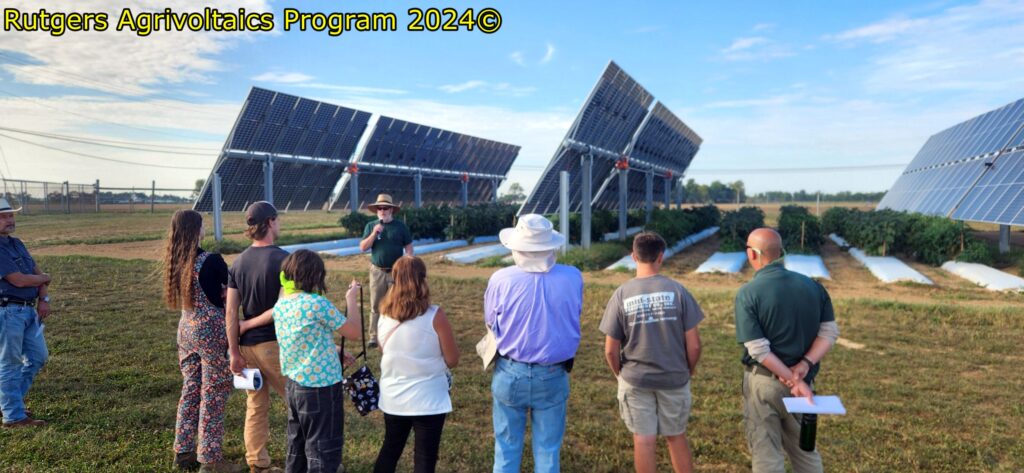
Dr. Ward answered many important questions about the logistics and potential of establishing farm land as a dual-use source of income using agrivoltiac panels and the ground beneath to grow crops. In addition with the research currently being conducted on specialty crops and soybean at RAREC, other work is currently being done at the Animal Farm on the Rutgers-SEBS campus in New Brunswick and at the Clifford E. and Melda C. Snyder Research and Extension Farm in Pittstown, New Jersey.

Members of the RAP team have worked closely with NJ-BPU to help facilitate and begin the implementation of the dual-use solar program in New Jersey as well as with the American Farmland Trust over the past three years to be the source of information for agrivoltaics research, education, and training for stakeholders in New Jersey and throughout the region.
Articles and images can be used by Permission from the Rutgers RAPS Team only – For Permission contact RAPS at shawn.sorrels@rutgers.edu.
